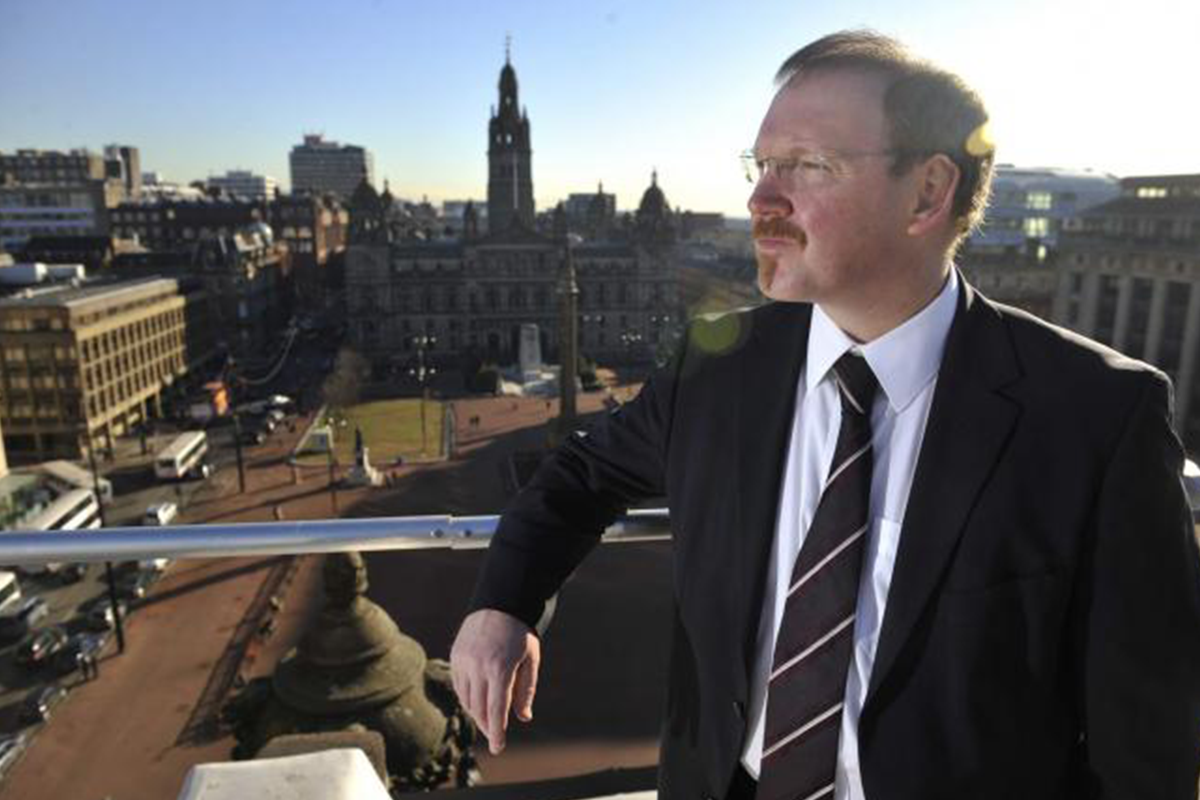
09 Dec 2020
By Stuart Patrick, Chief Executive of Glasgow Chamber of Commerce
Now that vaccines are making their way into the community, perhaps we can begin to plan ahead with more confidence.
We can be more certain that the COP26 climate change summit will arrive in Glasgow in November 2021 closer to its original face-to-face design. But what will delegates find when they arrive here?
With the demise of the JD Sports deal to buy Debenhams and with Arcadia and Bonmarche both going into administration, Glasgow’s city centre will sadly be sporting a gap-toothed smile. Empty units were already a problem on both Sauchiehall and Argyle Streets but the damage being done by online shopping has been vastly accelerated and the market will simply not have time to find alternative uses for vacant shop fronts before COP26. It is welcomed news that current Level 4 restrictions will lift at 6am this Friday, rather than a concentrated return to the shops on a Saturday had it been a 6pm opening – but even after shops re-open, city centre retailers will face a set of circumstances almost tailor-made to undermine their prospects.
The ban on travel between local authority areas is set to remain. This is uniquely damaging to Glasgow’s city centre given how much it serves the local authority areas surrounding the city itself.
Throw in the fact that Glasgow City Council boundaries were long ago gerrymandered into a much smaller central authority than almost any other city in the UK, with many of the wealthier districts deliberately kept out. On top of that the message to avoid public transport in a city where so many don’t own cars, the measures to discourage car drivers from the centre and the continuing ban on using non-essential offices are combining to make it a dismal prospect for a city centre that has been a major asset in attracting talent and investment to Scotland, providing over 30,000 jobs in the consumption economy.
There is nothing in the Higgins Report on Scotland’s Economic Recovery to address the damage being done to our city centres.
That is not surprising given that the report was published in June long before we appreciated the full nature of the restrictions that have been needed to contain the virus and how devastating those would be for city centre operations.
There is more to be found in a campaign launched by the Scottish Hospitality Group to save the hospitality industry, many of whom will also be struggling to survive in our city centre.
They recommend a combination of short term measures to allow longer opening hours under the tiering system, more generous grant funding for the businesses that cannot open, the waiving of business rates until at least March 2022, VAT cuts and sector working groups to help the industry recover. Both short term support to bridge the remaining months until the vaccines are deployed and longer-term actions to encourage growth are exactly what is needed to secure the future for our city centre.
Thanks to a decision made by council leader Susan Aitken on the advice of the city council’s own economic recovery group, a city centre task force has been set up to tackle the issues, with a strong representation from the business community. Glasgow Chamber of Commerce is committed to helping make that Task Force a success. But there is only so much that a local authority can achieve on its own. It will need active and enthusiastic support from both Scottish and UK Governments if we are to repair the damage in time for the city to show itself off to the world at COP26.
This article was first published in the Herald Scotland on 9 December 2020.